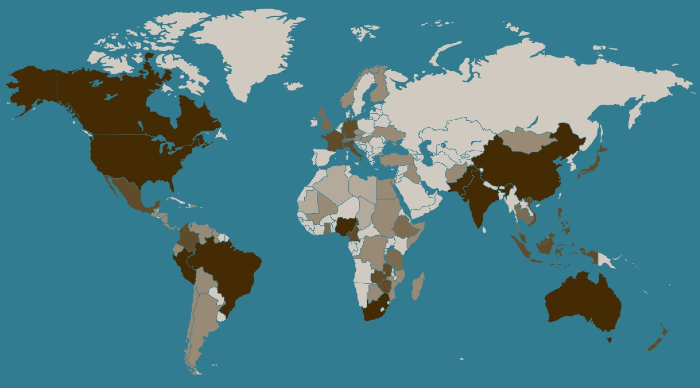Explore Nutrition for Healthy Growth of Infants and Children (Round 7)

Roadblock:
Poor nutrition in the period from conception to 24 months after birth contributes to 35% of deaths of children < 5 years of age, mainly due to increased mortality from infectious disease (The Lancet’s Maternal and Child Undernutrition Series, 2008). For children who survive, the effects of early undernutrition are long-lasting and largely irreversible and include a substantially higher risk of cognitive impairment and adult-onset chronic disease.
A key marker of poor nutrition is unhealthy growth, characteristics of which include intrauterine growth restriction (low birth weight for babies not born prematurely), and wasting (low weight for height) and stunting (low height for age) after birth. Underweight children can be wasted, stunted, or both. Better health outcomes are associated with nutritional strategies that distinguish between these cases, and rather than broadly increasing food energy intake, take a more precise approach, focusing on diet quality and targeting improvements in lean body mass and linear growth.
While it is imperative to develop new ways to promote healthy fetal and postnatal growth, there are unanswered scientific questions which hamper progress. For instance, the causes of stunting and intrauterine growth restriction and their links with other health outcomes are not fully understood. Furthermore, the molecular basis for nutritional deficiencies and their functional effects on tissues and organs remain unclear. Also unclear are the details of the critical role played by the human gut and its associated microbiota in both nutrition and immunity in infants and children.
What We’re Looking For:
The goal of this topic is to solicit new scientific understanding and new science-based preventative and therapeutic approaches to improve nutrition and promote the healthy growth and development of infants and young children. We strongly encourage investigating the mechanisms of action of nutritional deficiencies and interventions, since this will facilitate developing tests to measure nutritional status and to measure treatment outcomes, including discriminating responders from non-responders in population studies.
When practiced optimally, breastfeeding is one of the most effective available methods to promote child health and survival. Thus, while we include nutritional supplements and complementary foods among the potential interventions, proposed approaches should not interfere with or detract from breastfeeding.
We seek proposals that:
- Target healthy growth specifically, rather than focus on broadly increasing food energy intake;
- Are applicable to improving nutrition outcomes during the critical developmental period from conception to 24 months, since these approaches have a chance of preventing causes of newborn and childhood death as well as long-term adverse developmental and health effects;
- Are "off the beaten track," daring in premise, and clearly differentiated from approaches currently being developed or employed; and
- Have a testable hypothesis, include an associated plan for how the idea would be tested or validated, and yield interpretable and unambiguous data in Phase I so as to increase the chance of consideration for Phase II funding.
A few of the many options we will consider include:
- Growth-promoting substances based on a new understanding of beneficial aspects of breast milk;
- Approaches to enhance nutrient uptake or utilization based on the biology of the gut microbiota;
- Approaches based on knowledge from veterinary science or animal husbandry;
- Approaches that investigate the role of nutrition in improving immunity and oral vaccine efficacy as a secondary aim;
- Approaches based on new models for studying environmental enteropathy and the interrelationship of nutrition, immune function, and infection at the level of the gut and its associated microbiota;
- Approaches to promote healthy growth that are focused on developmental outcomes;
- Approaches targeting maternal nutrition to stimulate optimal fetal and newborn health;
- Use of new technologies to identify biomarkers of nutritional deficiencies and intervention outcomes;
- Tests for healthy growth beyond those based on height or weight;
- Investigation of the mechanisms of action by which nutrition improves development;
- Better definition of stunting and wasting and their functional effects.
We will not consider funding for:
- Approaches that detract from beneficial practices, such as immediate and exclusive breastfeeding for the first six months after birth;
- Approaches that are not applicable to the developing world setting;
- Approaches targeting overnutrition, obesity, or diabetes;
- Approaches that indirectly affect nutrient intake and assimilation, such as prevention and treatment of infection, sanitation approaches, and actions to increase income;
- Approaches that are exclusively social or behavioral; and
- Approaches already in a mature phase of clinical testing or product development.
